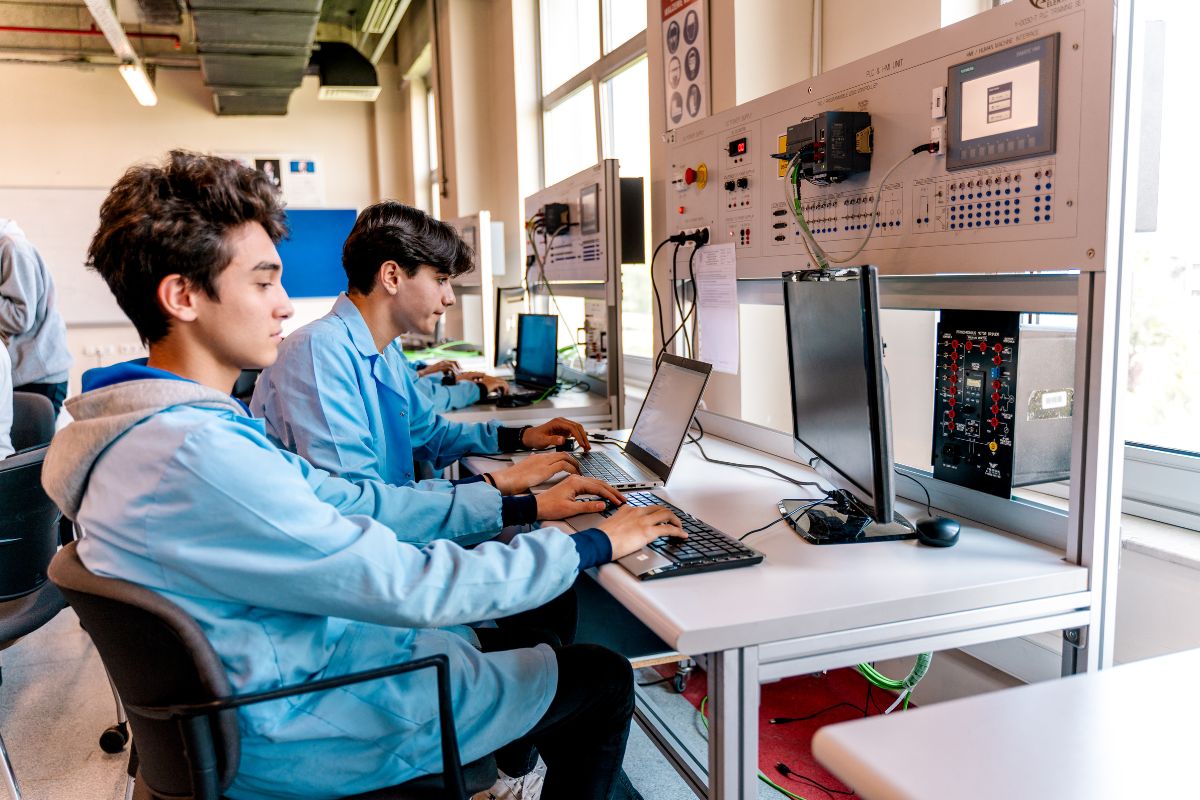What is the Role of EdTech in Making Vocational Training More Accessible?

Strong 8k brings an ultra-HD IPTV experience to your living room and your pocket.
EdTech has taken the world by storm lately. Many of these startups have caused major transformations in the education sphere. The vocational training sector has been underrated or less talked about. Vocational training is the specific type of practical training provided to individuals who are seeking employment in a specific field. The individuals are imbibed with special skills and training that will nurture them to long-term employment. The disparity between the job markets these days has been unfair to those who are deserving but cannot afford normal education, to those who have completed education but have no job vacancies as such, & to those who are underprivileged combined with a lack of normal intelligence quotient (IQ).
EdTech plays a major role in these vocational education programs. Vocational training is a specially crafted program for individuals, to equip them with the necessary skills & training for a chosen path of career or profession. By enrolling in these programs students acquire crucial vocational skills needed for employment combined with absorbing foundational knowledge necessary for survival.
Technologies Used in Vocational Training
The integration of several technologies into vocational training accelerates the teaching process & the grasping process of the students. It is doubly beneficial for both. As we live in a technologically dominated world, we get better opportunities to gain the skills & knowledge required to thrive in the competitive environment. With the advent of technologies like artificial intelligence (AI) & machine learning, the concepts involved in education are more simplified to gain a better understanding. Let’s see the effect of these technologies:
A. 3D Modelling:
3D planning is used in industries or organizations to better understand the model or lookalike miniature piece of an upcoming project. Institutes have adopted the same technology to explain the concepts to the pupils by creating the lookalike of a particular concept to understand better. The method of visuals is used best here as people remember through visuals better what is true. There are different Computer Aided Design (CAD) programs, to implement the virtual 3D components. It is mostly used to better visualize a project before initiating it. It is a user-friendly model & easy-to-use cloud-based program that offers interactive & multifunctional services. It enhances e-learning for technical skills.
b. Virtual Reality:
Virtual Reality (VR) helps us better conceive the said product or service after it is made. The recent emergence of affordable VR technologies like Oculus Rift, the HTC Vive & the Sony PlayStation VR are gaining the attention of the users. According to researchers, it may be the next big move in technological innovation, thanks to EdTech. Currently, we have two fields that can share similarities at first. The first is VR & the other is Augmented Reality (AR). The peculiar distinguishing factor is that AR allows users to visualize a virtual component in the real world that surrounds us, as against VR enables us to create a fictional virtual world that doesn’t have to be similar to the real one.
c. Mobile Apps:
EdTech has also emerged in mobile apps as a means to bring in a revolution in the education sphere. Learning apps offer attractive benefits to users that gain increased engagement & motivation to learn. It is a mutual benefit thing. Another important aspect in this is the ease of time. Anytime, anywhere & in your time frame, these are the most important benefits of mobile apps. The model of learning apps in itself is favorable as it also enhances communication with the teachers. This is most beneficial for the students having issues with communicating or who are introverts. These are one of the best digital learning tools.
d. Remote Collaboration
In smart learning tools, the virtual learning environment creates a sense of value & collaboration within the students. It is flexible in terms of location, and preferable schedules, students grab global exposure, & also instills a collaborative spirit. It enhances teamwork & exercises faster innovation in terms of given projects or tasks. Collaborative learning also helps to improve problem-solving abilities which increases efficiency & also enhances the personality of students. Online vocational education shapes up the overall personality of the student via remote collaboration.
Benefits of EdTech in Vocational Training
AI in education is revolutionizing vocational training by making skill-based education more accessible, affordable, and efficient. Online learning platforms allow students to access high-quality courses from anywhere, eliminating geographical barriers. Virtual Reality (VR) and Augmented Reality (AR) provide hands-on training simulations, enhancing practical learning without expensive equipment. AI-driven personalized learning tailors content to individual needs, improving retention and engagement. Cloud-based collaboration enables remote mentorship and real-time skill assessments. Additionally, smart learning tools reduce costs, making vocational education more affordable for learners. By integrating technology into training programs, education technology ensures that individuals can gain industry-relevant skills and stay competitive in the evolving job market.
Here are 5 benefits of EdTech in vocational training:
Enhanced Accessibility: One of the biggest advantages of EdTech is the accessibility it offers. With online vocational programs, learners no longer have to worry about geographical limitations or fixed schedules. Whether you're in a rural area or juggling work and family commitments, you can access quality training materials whenever it fits your life.
Practical, Real-World Skills: Vocational training often revolves around acquiring practical skills. Education technology brings these skills to life through interactive lessons, virtual simulations, and hands-on exercises. This approach not only makes learning more engaging but also ensures that students are prepared for real-world challenges they will face in their careers.
Personalized Learning Experiences: EdTech platforms often use adaptive learning tools to create customized experiences for students. If a learner is struggling with a particular concept, the platform can offer additional resources or adjust the pace of learning. This individualized approach ensures that every student, regardless of their starting point, gets the support they need to succeed.
Affordability and Cost Savings: Traditional vocational training can be expensive, with costs associated with facilities, instructors, and materials. Education Technology helps bring down those costs significantly. Online courses are often more affordable and eliminate extra expenses like travel or printed books, making learning more accessible to people from all walks of life.
Better Career Opportunities: By equipping learners with in-demand skills through digital learning tools, vocational training becomes a gateway to better job prospects. These platforms can quickly update curricula to reflect current industry trends, helping students stay competitive in a rapidly evolving job market. With certifications that hold real value in the industry, AI in education opens doors to various career opportunities.
EdTech is changing the way vocational training is delivered, making it more flexible, affordable, and effective for today’s learners.
Conclusion
EdTech is breaking down barriers to vocational training, making skill development more accessible than ever. Whether it's an aspiring electrician learning through interactive simulations or a single parent taking online coding classes at night, technology is creating new pathways for people to gain practical skills on their own terms. The flexibility, affordability, and hands-on digital tools offered by education technology empower individuals to build careers that once seemed out of reach.
Note: IndiBlogHub features both user-submitted and editorial content. We do not verify third-party contributions. Read our Disclaimer and Privacy Policyfor details.







